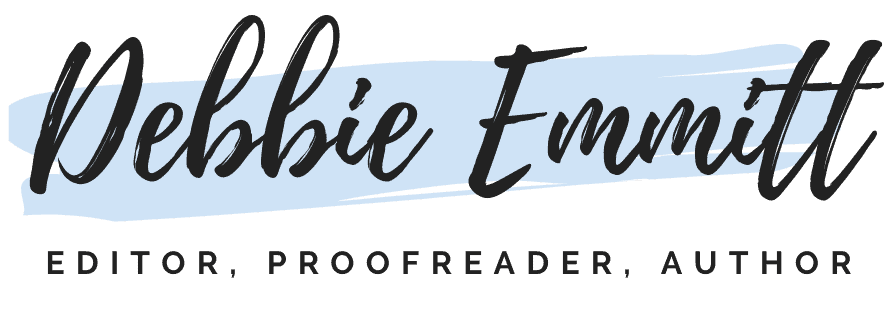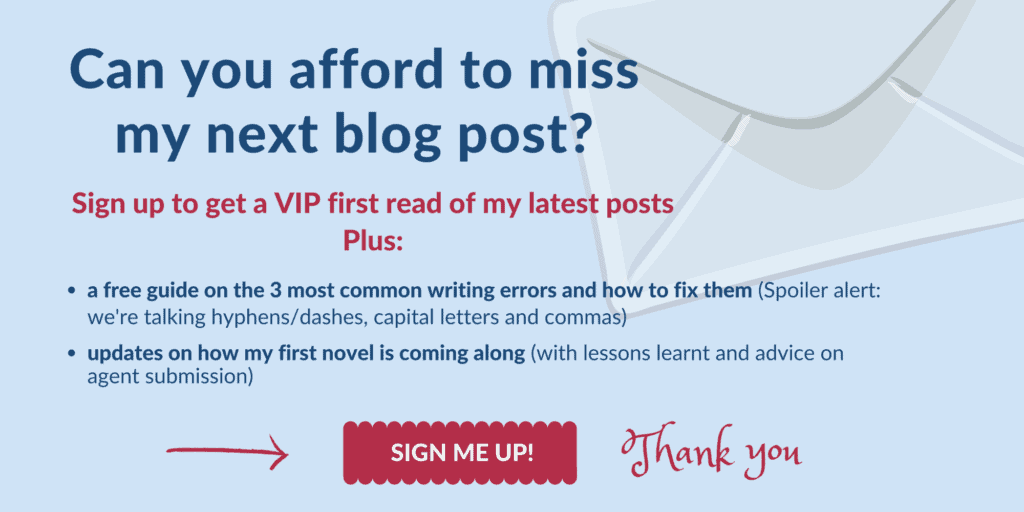
Stay on top of your freelance editing business by running a CEO Day. I’ll take you through the process and give you a free template report into the bargain.
As freelance editors, we have to wear many hats. The overarching one is that of CEO, but we often neglect taking this macro view of our editing business due to the time and effort taken up by other areas (editing, marketing, finance, website…)
Twice a year I run a CEO Day. This is dedicated time spent analysing every aspect of my editing business, including finances, clients, marketing, website, self care and CPD. I try to go somewhere different from where I usually work (e.g. a café or even just a different room). I block out the day in my diary so I can focus on the task at hand.
Discover what I do during my CEO Day, and get your copy of my report template to make running your own CEO Day a breeze. It’s aimed at editors, but any freelancer could easily tailor it to suit their business.
Download your free CEO Day report template first, then I’ll take you through each section:
1. Reminder of intentions/goals
If you have intentions or goals for your business, list them. If you don’t, think about coming up with a few to give the next year some clarity and focus.
Are you on target? If not, note down what happened to prevent your progress or focus and what you can do to be on target this coming year.
2. Money
Revenue and profit
List your revenue (gross income) and net profit (revenue minus any commission you’ve paid, expenses, tax and National Insurance (or equivalent in your country).
Are you on target? If not, note down why and what you can do to improve your figures this coming year.
Clients and money
List the 10 clients that brought in the most money for you, then the 10 that brought in the least money. Add the client type for each entity (e.g. company, entrepreneur, self-published author), the total income each generated, the total hours you worked for them and the average hourly rate for each.
To calculate the average hourly rate, the formula is: Total income divided by total hours.
Are there any patterns in the data? For example, is the hourly rate for one client far higher than for another? Are your ideal clients attracting enough income?
Come up with some recommendations for this year. For example, can you use this information to market your business differently this year? If the income from your ideal client type works out far lower per hour than others, what can you do to improve this situation?
Passive income analysis
If your business generates passive income (this is technically money that comes in with little effort, such as from book sales or commission, although the “little effort” part of the definition doesn’t always match reality. It takes a huge amount of effort to create and market a book!), note it here.
What do the figures show? What recommendations for the coming year can you glean from them?
3. Clients and marketing
Source of work
Where have your paid jobs come from this past year? Freelancing sites, social media platforms, referrals, somewhere else?
List how many jobs each source has generated, along with the total income for each source. Are your professional membership fees generating enough client income (e.g. if you’re a member of the Alliance of Independent Authors (ALLi) or the Chartered Institute of Editors and Proofreaders (CIEP))?
Body of work
List how many of each type of editing project you have worked on over the past 12 months (e.g. non-fiction, memoir, fiction, web content, poetry, business reports).
What did you enjoy the most? The least? Did you not get around to something that you would have liked to do?
Clients
Note down how many new and returning clients you had during the year. Don’t include anyone more than once. For example, if you had a new client in January and then worked with that person again in June, just count them once (in the ‘new client’ category), as you are comparing figures with the year before.
Did you have enough new clients? Did you have enough returning clients?
List client types, along with how many of each you have worked with over the past year, the total income for each type, total hours and average hourly rate.
Are there any client types you would rather not work with anymore? Why not?
Are there any client types you’d like to do more work for? Or client types you don’t work with yet but would like to?
List some recommendations for working towards these aims regarding client types.
4. Web analytics
Certain web metrics are essential to track if you are serious about improving your search engine optimisation (SEO), getting more enquiries via your editor website, and generally being more visible online.
The main ones to take note of are:
- The most-viewed pages on your site
- Pageviews of the most important webpages (e.g. homepage, your services page, any other sales pages)
- Total pageviews for your site
- Total users
- Bounce rate and engagement rate
- Average engagement time
- Views per session
- Total clicks
- Total impressions
- Average click-through rate (CTR)
- Average position
- Top countries your visitors are from
- Devices being used to access your site (desktop/mobile/tablet)
- Top browser used to access your site
If you use Google Analytics for your site, you’ll find most of these stats there. Others, such as CTR and average position, are in Google Search Console (GSC). Remember to change the date of reports to reflect the whole year, from 1 January to 31 December.
Note down your key learnings from these stats. Did anything surprise you? Are there any anomalies? How is your site doing in Google search results? Where is most of your site traffic going? Are your services/sales pages attracting enough visits? Is your bounce rate high? (A bounce is when someone visits one of your webpages and ‘bounces’ straight out of your site again, without visiting a second page. A high overall bounce rate can be a sign your site isn’t ‘sticky’ and can affect your Google ranking.)
List some recommendations on how to improve your editor website this coming year.
5. Social media
Make note of some key metrics for each social platform (Facebook, LinkedIn, Instagram etc), including:
- Total posts in the past year
- Median post engagement
- Top performing posts
- Reach/impressions
- Page/profile visits
- New followers/page likes
- Total followers
- Male/female audience percentages
- Primary location of audience
You can find most of these stats via your social platform’s analytics, e.g. Meta Business Metrics for Facebook and Instagram, and analytics for LinkedIn. At the time of writing, I believe your LinkedIn account has to be a ‘creator’ account for you to see analytics. Tell me in the comments if this is no longer the case!
I couldn’t find male/female information or country data in LinkedIn analytics, but this is available in Meta Business for Facebook and Instagram.
Analyse your social media statistics. How are your engagement levels and growth when compared with the previous year? Where do you need to focus your attention this year?
Which posts had most attention? Which posts had least attention?
6. Newsletter signups and lead magnet downloads
If you have a mailing list, note down how many subscribers you have in total.
How many new subscribers signed up this past year? How many unsubscribed? What is your net increase in subscribers?
If you have access to lead magnet download figures, make a note of these.
What was your average open rate and click-through rate (CTR) for your newsletters during the past twelve months?
List some recommendations on how to increase your subscriber numbers, open rate and CTR.
7. Continuing professional development (CPD)
Did I take any courses, read any business or editing books, or attend any professional conferences this past year? Make a note of all these.
List the CPD you would like to undertake this coming year and the costs involved. Include travel and accommodation if applicable.
Networking
What networking channels do you use to find potential clients? To connect with other editors and proofreaders? Are they working for you? How can you improve their effectiveness? Where would you like to try this year?
List any key learnings from all this data and some recommendations to focus on over the next 12 months.
8. Business goals for the next 6–12 months
Set some business goals based on the analysis you’ve done today. Always keep your overall intentions in mind. Setting extra goals that aren’t working towards them will cause you stress and overload you!
Make your goals SMART (specific, measurable, achievable, relevant, and time-bound) so that you’re more likely to reach them. e.g. I will complete two CIEP editing courses by November 20xx to improve my skills and make myself more marketable.
How would you like your business to look in a year’s time?
9. Self-care goals for the next 6–12 months
Set some self-care goals while keeping your overall intentions in mind. Remember to make them SMART. e.g. I will attend a yoga retreat by June 20xx to prevent stress buildup and make me more mentally resilient.
How would you like to feel about yourself in a year’s time?
10. Put dates and regular tasks into your calendar
This step will increase the likelihood that you will carry out your planned recommended tasks, planning sessions, regular admin, and other non-billable activities.
Here are some ideas:
- CEO Day – 1 day every 6 months
- Marketing Manager Day – 1 day every 2 months
- Finance Manager Day – Half a day every month (last day of month)
- Web Manager Day – 1 day every 2 months
- Self-Care Manager Day – Half a day every 2 months
- Editing Manager Day – Half a day every 2 months
- Writing blog posts once a fortnight
- End-of-month analysis
- Writing and scheduling social posts
- School holidays
- Family holiday
- End-of-year setup (e.g. set up 2025 spreadsheets, buy new wall planner…)
11. Check all is up to date
This is a good opportunity to check that all aspects of your business are up to date. Check your membership status of any professional organisations, contact details, experience, testimonials, profile photo and more are current in the following places:
- Professional directory entries
- Email signature
- Profile signature in forums
- Social media bios
- Profile on freelancing sites
Also check the following elements are up to date:
- Website privacy policy
- Terms and conditions/contract details
- Billing address for subscriptions/memberships
- Portfolio webpage
Free CEO Day report template
Here’s your free report template, tailored for editors, so you can get cracking!









Leave a Reply